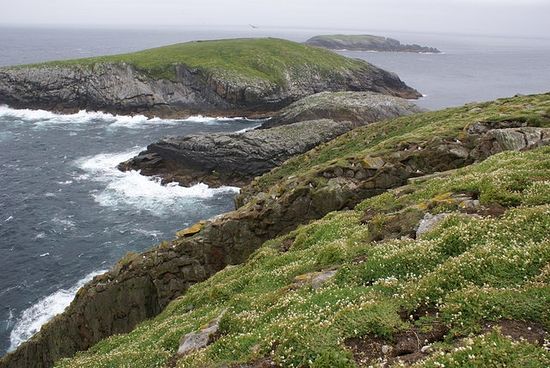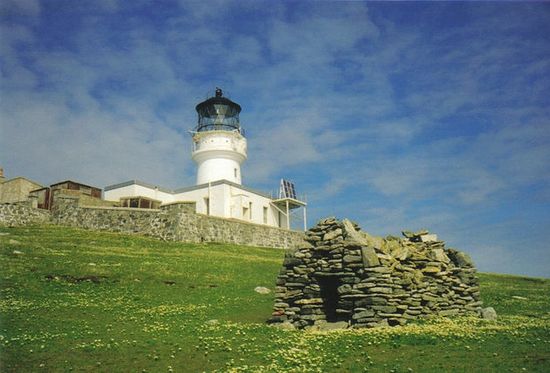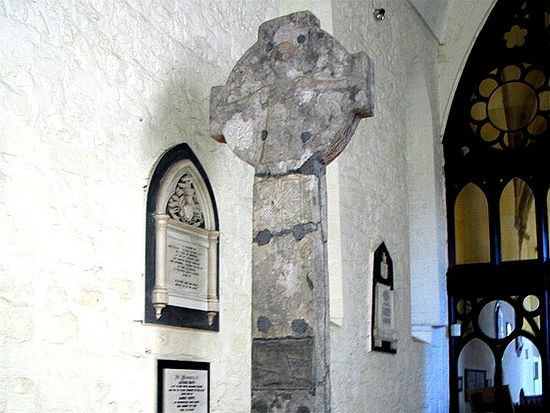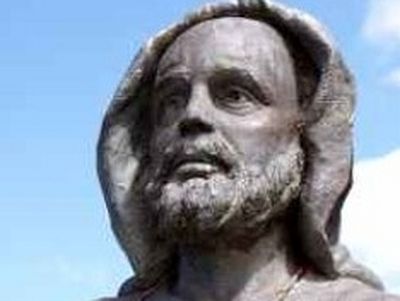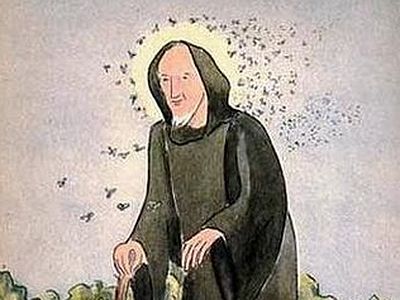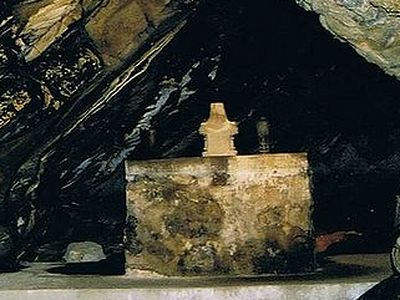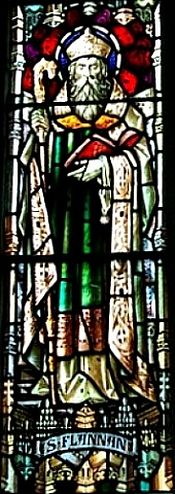 A stained glass window of St. Flannan
A stained glass window of St. Flannan
Flannan was probably born in the medieval Irish kingdom of Thomond in present-day County Clare. His father was a local chieftain named Turlough. In spite of his father’s protests, Flannan became a monk. First he studied under a learned monk named Blathmet and later moved to the monastery founded by St. Molua in Killaloe, Clare. The name Killaloe means “Church of St. Lua”. St. Flannan was one of the ablest and most zealous students. From his childhood he promised to dedicate all his life to the service of God, and already in his youth was known for his holy life.
Once, when Flannan was baking, a supernatural light appeared from his left hand that lit all the space around him. Hearing of this miracle, St. Molua ordered that Flannan be made the next abbot. Flannan became a talented abbot and preacher and many ordinary people came to love him. Like many other Celtic saints, Flannan was a wandering missionary. Thus, the foundation of churches on the isle of Inishbofin in Galway and on the isle of Inishlannaun in Lough Corrib (the second largest Irish lake, situated in the west of Ireland) are attributed to him. On Inishbofin there are remains of St. Flannan’s well in a cemetery. The holy man erected churches all over the ancient province of Munster and also visited the Isle of Man. It was said that during the abbacy of Flannan the fields in the area produced extremely rich crops, fish of various kinds were bountiful in the sea nearby, there were no droughts, the forests produced hazel nuts and berries in plenty, and local people lived in peace.
In about 640, local people decided that Flannan should be consecrated bishop; so, after a probable pilgrimage to Rome, the saint became the first Bishop of Killaloe. As a bishop he gained a great fame for his sermons, mercy and hospitality. The saint worked numerous wonderful miracles. He travelled far and wide preaching the Good News. According to tradition, Flannan afterwards left Ireland and labored for some while in Scotland and, especially, in the Hebrides—an archipelago in the Atlantic Ocean to the west of Scotland. He managed to read the entire Psalter every day. His Life relates how St. Flannan, despite severe frosts, often in the middle of severe winter, standing in the icy river, would recite the Psalms from the beginning to the end.
Flannan was regarded as a great missionary, venerated in many regions of Ireland and Scotland. His sermons were so eloquent and inspired that with time his father abdicated the throne, became a monk, and lived an ascetic life for the rest of his days. Most probably he lived as hermit in Lismore, Waterford, surrounded by mountains and forests, becoming a disciple of St. Colman of Lismore. According to tradition, as a very old man Flannan returned from Scotland to Ireland where he reposed in Killaloe and was buried. He predicted his death beforehand and blessed all his disciples and relatives, instructing them to live in peace and always to be just. The faithful began to flock to his grave after his death and many miracles were recorded.
The Flannan Isles near the Hebrides are named after St. Flannan. This is a small group of seven isles officially belonging to the Outer Hebrides, located approximately 32 kilometers west of Lewis and Harris. There are remains of a monastery and a ruined chapel in honor of St. Flannan on one of the Flannan Isles, the Great Island – Eilean Mòr. Most probably the saint himself lived here with several of his disciples.
Today Killaloe is a large village in County Clare on the River Shannon. The thirteenth-century Killaloe Cathedral is dedicated to St. Flannan to this day. It was first built during the transition from the Romanesque to the Gothic style and was rebuilt afterwards. The Cathedral, among other relics, contains a very ancient twelfth-century “high” cross that was recently restored, and another early cross connected with a penitent Viking. The relics of St. Flannan were most likely kept inside this Cathedral. The early stone chapel of St. Flannan situated on the grounds of the Cathedral may have been built by the saint himself! The present structure dates back to the eleventh century, and it is here that the saint’s relics may have been preserved before the Reformation. St. Flannan’s holy well is in a garden opposite the Cathedral.
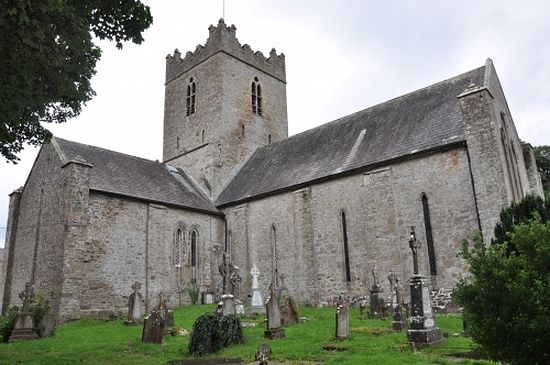 Killaloe Cathedral of St. Flannan
Killaloe Cathedral of St. Flannan
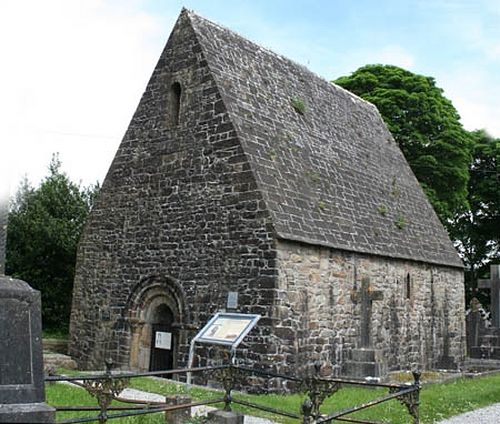 St. Flannan's Chapel in Killaloe, Clare
St. Flannan's Chapel in Killaloe, Clare
Apart from the Anglican Cathedral (Church of Ireland), Killaloe also has a nineteenth-century Roman Catholic church dedicated to St. Flannan. There is a chapel dedicated to St. Molua, the founder of Killaloe Abbey, in the grounds of the Catholic church. For some time between 1002 and 1014, the famous King Brian Boru had a palace in Killaloe on the site of the current Catholic church, so at that time Killaloe was virtually the capital of Ireland! There is also a modern Roman Catholic church of St. Flannan in the Scottish town of Kirkintilloch in East Dunbartonshire.
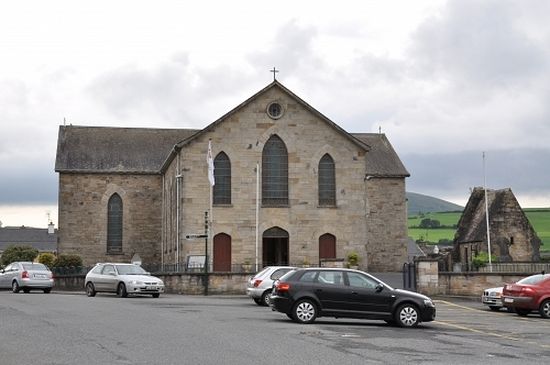 RC Church of St. Flannan in Killaloe, Clare
RC Church of St. Flannan in Killaloe, Clare
Holy Hierarch Flannan, pray to God for us!
